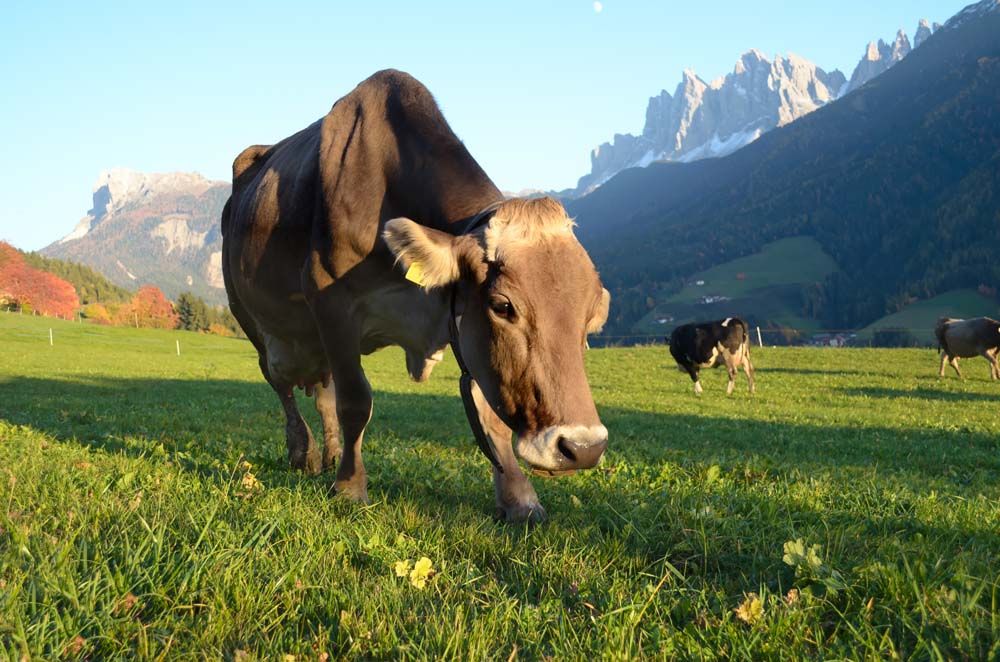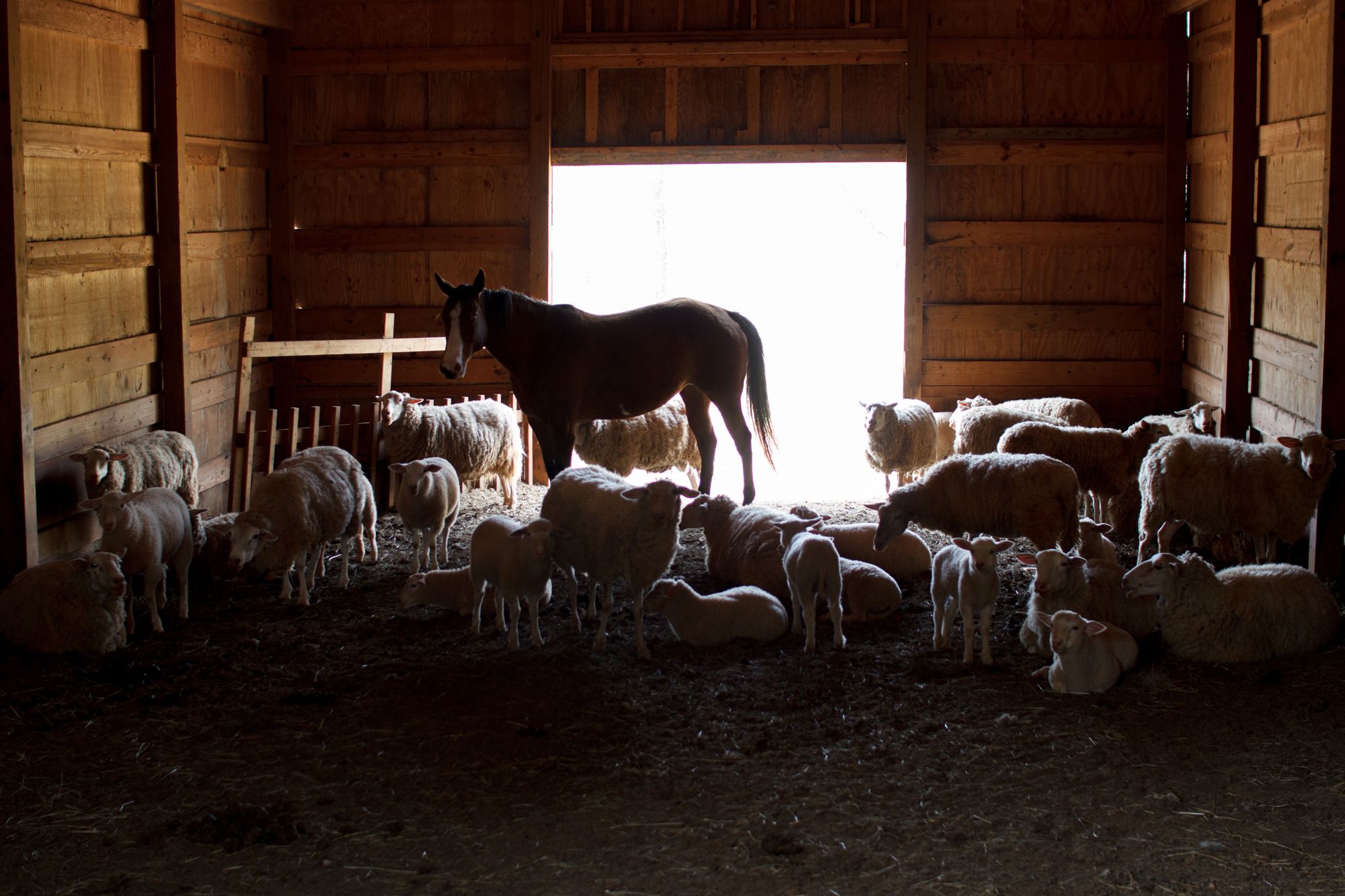The Summer Survival Playbook
For Pets, Poultry and Pasture Pals


“How to beat the heat!” is arguably the most clichéd phrase ever used for staying cool during the worst that summer has to offer. Nonetheless, it does address one of the most pressing topics on the minds of people who live in areas where double or triple digits temps are the norm.
This expression takes on added meaning to acreage owners who also have animals to care for. In fact, helping our pets and livestock cool down when the temperatures soar is a much more important undertaking than caring for ourselves because they are virtually helpless to do so on their own.
Whether you have a couple of pets, a few chickens, a head or two of stock or you have a large and thriving farming business, you are in that time of year when you must give serious attention to the animals you keep, so they can continue to provide the benefits that you enjoy from owning them for yet another summer.
Let’s discuss some basic (as well as some clever and innovative) ways to accomplish this.
The Basics
There are three essential things your pets and livestock need to stay cool — shade, ventilation and water — and several ways to provide them. The best approach may vary depending on the number and size of animals in your care.
- Shade. Whether they are bison or chickens, all animals need a place to retreat from the sun’s direct rays, so they should all have access to shade and shelter. These can be trees, buildings, canopies or open covers.
- Ventilation. Large groups of livestock housed in enclosed areas, such as barns, generate significant body heat. To keep them comfortable, it’s essential to provide airflow through external means. Barns with adjustable curtains or louvers, open-sided shelters and strategically placed fans can make a big difference in maintaining a healthy, cooler environment.
- Water. A source of clean, fresh and cool water is an absolute necessity for their comfort. Besides drinking the water, they will often use it for cooling themselves. Dishes, troughs, licking waterers and even wading pools can provide this much needed relief from the summer heat.
A word of caution: Although tempting, it is best to avoid providing them with extremely cold water. This may actually be counterproductive because it tends to slow down the cooling process.
General Recommendations
When the mercury rises, our animals can benefit from the same kinds of heat relief we enjoy. These simple practices can go a long way toward keeping them safe and comfortable all summer long:
- Provide misters and sprinklers: Cows, goats, dogs and chickens respond well to the added moisture and cooling effect of a light spray.
- Adjust feeding schedules: Feed animals in the cooler parts of the day to reduce body heat caused by digestion.
- Limit handling and transportation: Moving animals generates stress and raises body temperatures, so avoid it during peak heat.
- Regular grooming: Removing excess fur or giving summer cuts helps improve heat dissipation, especially for long-haired breeds.
- Monitor for heat stress: Watch for warning signs such as excessive panting, lethargy or rapid breathing — early detection can prevent serious issues later.
Animal-Specific Recommendations
Cows
For large animals, water is a critical factor in both health and comfort. According to the University of Wisconsin-Madison, a 500-pound growing calf requires about 8 gallons of water daily, while a lactating cow may need up to 18 gallons. In addition to drinking, water can help cattle stay cool at night — spraying down the area where they bed allows the ground to absorb cooler evening air and provide relief from the heat.
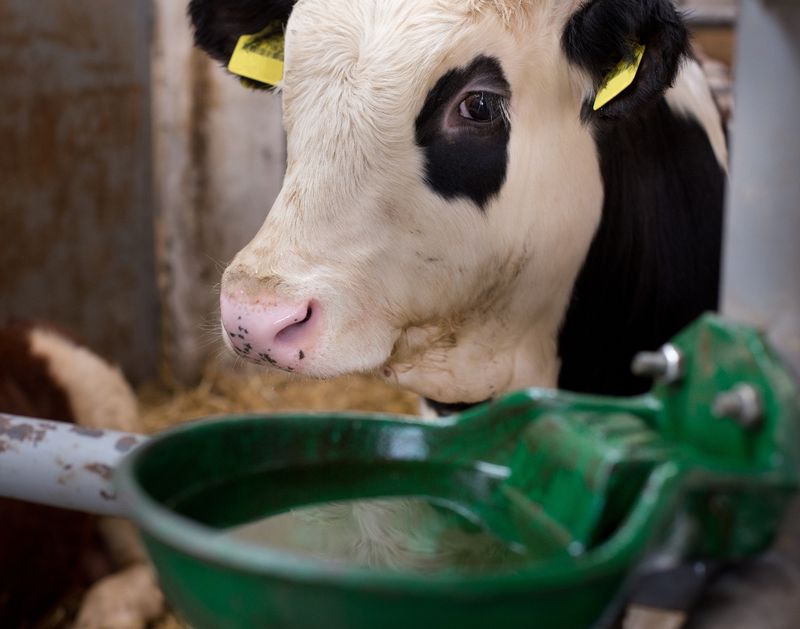
Pigs
Pigs need to have wallows and mud to roll in to help them regulate body temperature. A well-drained wallow in an area that is separate from both where they eat and where they defecate will not only work with their built-in thermostat but will keep the smell down as well. In addition, pigs are susceptible to sunburn, and these shallow mud pits will prevent our porcine pals from suffering that uncomfortable condition.
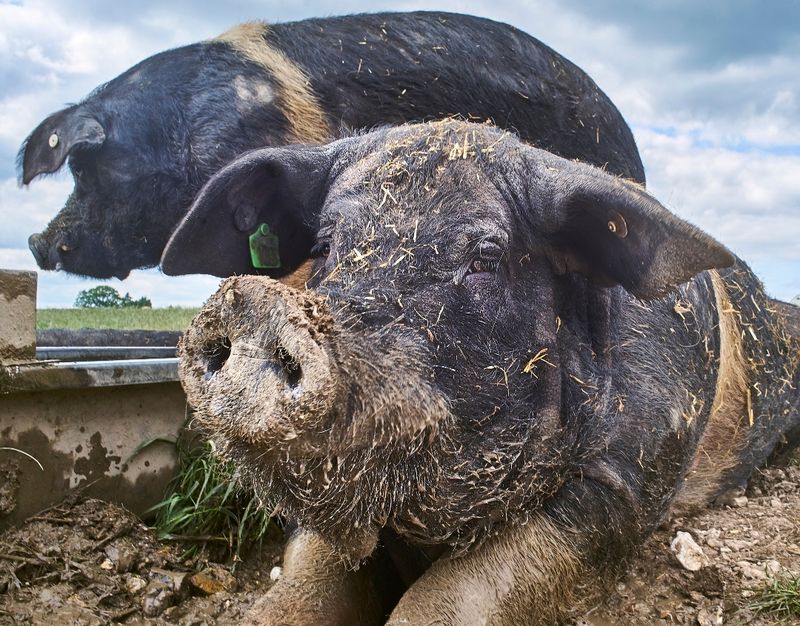
Sheep and alpacas
Some have found that shearing wool-producing animals once a year before the heat of summer sets in helps them to cope with the warm months. Avoid doing the shearing during the hottest weeks of summer because these animals are also susceptible to sunburn; their wool actually acts as a sunscreen. But shearing in late spring or early summer will allow a short layer of newly grown wool to protect them from the sun’s deadly rays.
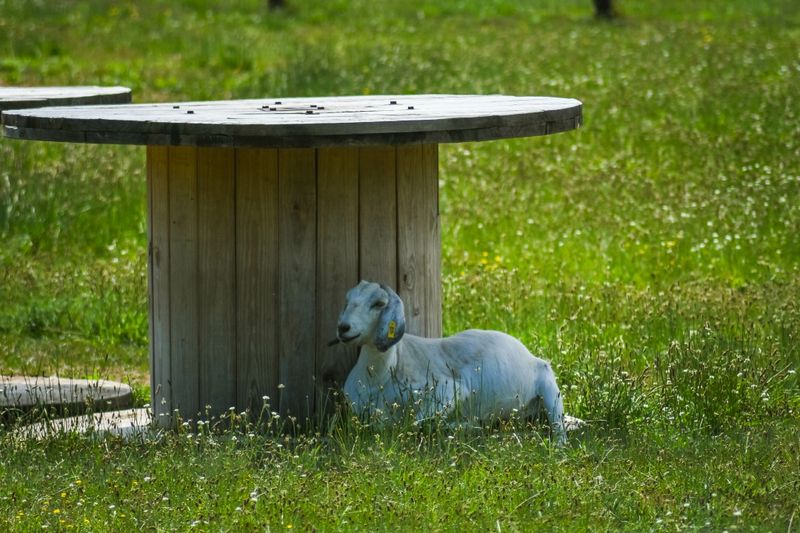
Goats
Some goats can also be sheared as a heat-moderating method. Since we know that goats love to climb, placing big blocks of ice around their run gives them a way to look cool and be cool at the same time. And like dogs, goats love splashing around in wading pools. Goats are also grain-eating animals, so it is important to limit their grain intake to the cooler parts of the day because adding grain to their food is like adding coal to a stove; it raises their body temperature.
Rabbits
Because of their long or thick fur, rabbits need to have a way to dissipate body heat. Commercial cooling mats are available, but you can create your own by placing refrigerator-cooled ceramic or slate tiles in the rabbit run to give them a place to stretch out on hot days. Frozen bottles of water will also provide our furry friends something to lean against to prevent them from retaining too much heat. And since most of a bunny’s heat is dissipated through their ears, spraying cool water on their ears occasionally will aid in their relief.
Chickens
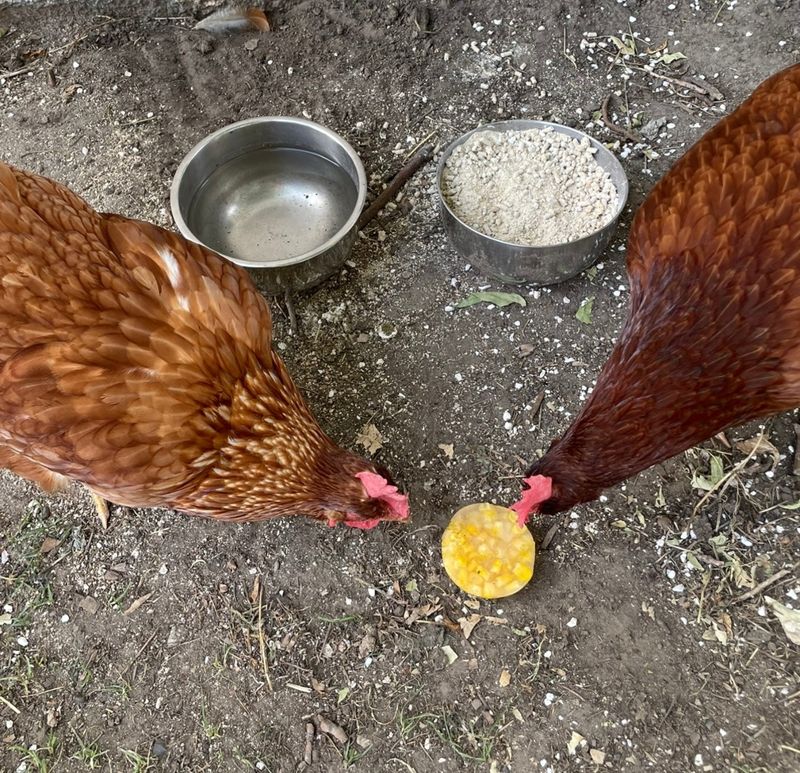
Besides providing a mister and fans, be sure your chickens have suitable areas with fine dust or sand where they can take their regular “dust baths.” These not only help them maintain their plumage but also help them regulate their body heat. Ice cubes put daily into their waterers ensure that the water will stay refreshingly cool. In addition, “popsicles” made by putting frozen fruit or vegetables in ice cube trays or muffin tins provide our feathery friends a fun and refreshing way to beat the heat. Chickens also love to have a shallow tray or dish of cold water to stand in and “cool their heels.”
Dogs and cats
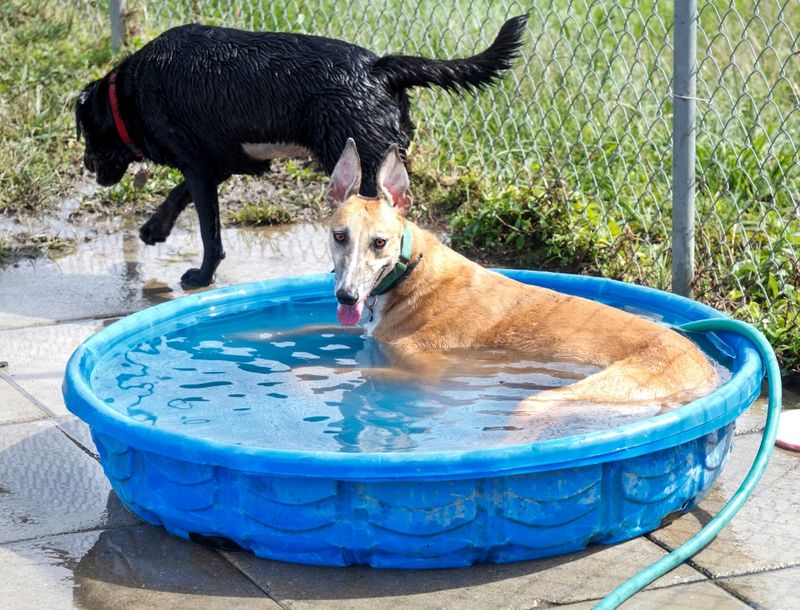
Even our household pets can benefit from a couple of cooling hacks during the hot months. Dogs spend most of their day sleeping, but to prevent unhealthy lethargy during the hottest part of summer, lay a damp towel on a dog’s tummy occasionally. This will help cool skin temperature and add to overall comfort. Since the ground can get extremely uncomfortable in summer, it is best to avoid taking dogs for walks on concrete. Wiping their paws down with a cool, damp cloth will aid in preventing their footpads from burning. Give your canine friends a cool haircut for the summer – even those that do not require regular grooming. Cats can benefit from a visit to the groomer as well to remove excess hair.
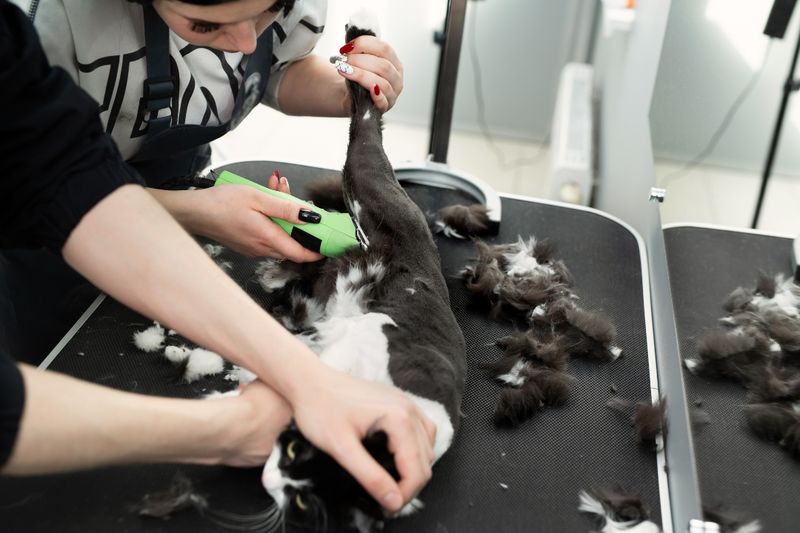
For many acreage owners, caring for pets and livestock is more than a chore — it’s a deeply rewarding investment that gives back in countless ways. There’s nothing quite like sitting on the porch during a cool summer evening, your loyal dog at your feet, watching your animals graze peacefully across the land you’ve worked hard to cultivate. But to keep our critters comfortable and content through the hottest months, we need to help them do what we do for ourselves—and we’ll say it again — beat the heat!
Tags:Country Critters

Acreage Life is part of the Catalyst Communications Network publication family.













